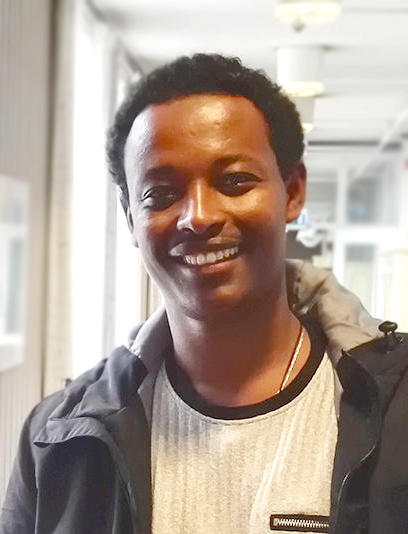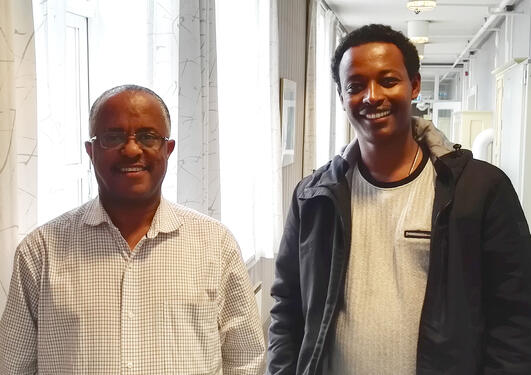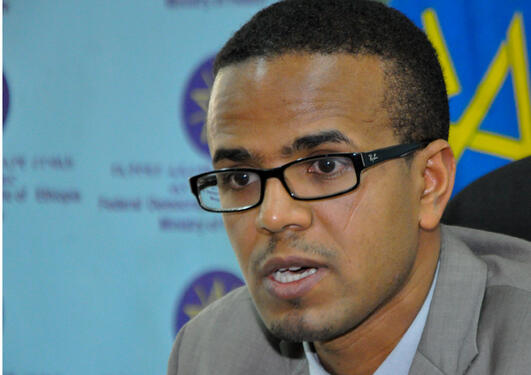Lelisa Fekadu Assebe: Analysing communicable disease interventions
PhD Candidate, Lelisa Fekadu Assebe, is studying evidence-based, cost-effective policy-making and priority setting of public health interventions in Ethiopia that are addressing three major global health threats: malaria, HIV, and TB.

Hovedinnhold
Assebe has taken leave from a leader position in the Ethiopian Federal Ministry of Health to complete a PhD. His studies are funded by a Gates Foundation capacity-building project. His project is entitled, “Malaria, HIV and TB interventions in Ethiopia: Patient costs, health benefits and financial risk protection.”
Catastrophic costs
In the last 20 years, Ethiopia has made notable progress towards the global goals towards elimination of the three major health threats: malaria, HIV, and TB. Today, public health funded interventions addressing these 3 diseases consume nearly 20% of Ethiopia’s total health expenditure. However, despite many diagnostic and treatment service being free of charge, patients with these conditions still incur catastrophic out-of-pocket expenses in the form of direct and in-direct costs. The individual / household economic burden varies with socio-economic status. While poor households may actually spend less on health, the expenses can actually be catastrophic for them.
During his mid-way presentation, Assebe reported the status of patient cost and incidence of catastrophic health expenditure incurred by HIV and TB households across income quintile.
In Ethiopia, HIV and TB affected individuals and their households in Ethiopia face substantial costs in seeking care despite “free medical services”. The incidence of catastrophic health expenditure were high for HIV and TB care, and inequitably distributed across socio-economic groups. This implies poor households are more likely to be pushed into impoverishment through reduction of basic requirements to compensate for HIV and TB care. It is an additional burden for households when it is family members of productive ages that are affected. Then the lost-income component becomes an important cost.
Assebe’s first paper concludes that the poor experience catastrophic health costs more frequently than the rich. His results showed that direct medical costs were the major driver for patients with HIV, and indirect costs for TB, in particular. He concludes that the government benefit package should be expanded to include strategies that reduce the substantial direct and indirect patient costs, for HIV and TB patients, in particular. Assebe said that one of his research challenges was that the number of malaria cases was lower than anticipated – bad for his research, but good for Ethiopia!

What malaria interventions are more cost-effective?
Assebe’s second paper addresses government public finance of malaria interventions, and assesses which of the selected malaria intervention provide more health gains, private expenditure averted, and catastrophic health expenditure averted. This will provide evidence with equity and financial risk protection that assist policymakers in identifying interventions that represent the best value for money during allocation of resources and health benefits package design.
His research showed that Artemisinin based combination therapy [ACT] and Long-Lasting Insecticide-treated bed nets [LLIN] account for the largest share of deaths averted and the CHE case averted (there are 4 main ones). All four malaria interventions save more lives among the poor than among the rich. He concludes that preventing and treating malaria provides substantial health benefits and financial risk protection to Ethiopians, especially poorer households.
Learn more.
- Helping Ethiopia to attain a robust, sustainable, effective national essential health service package.
- SDG 3.3 ending the global epidemics of AIDS, tuberculosis, malaria (and others) (3.8 UHC)
- Gates Foundation



